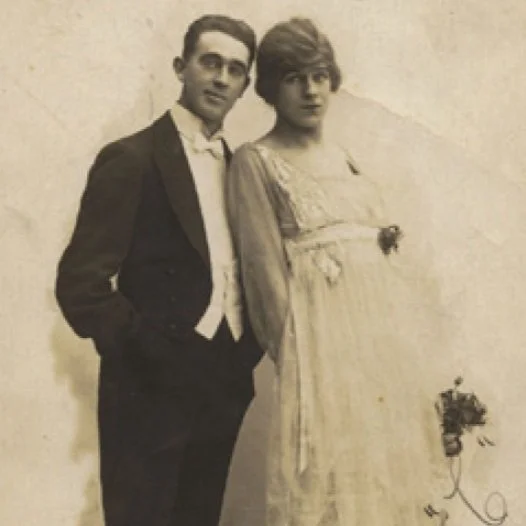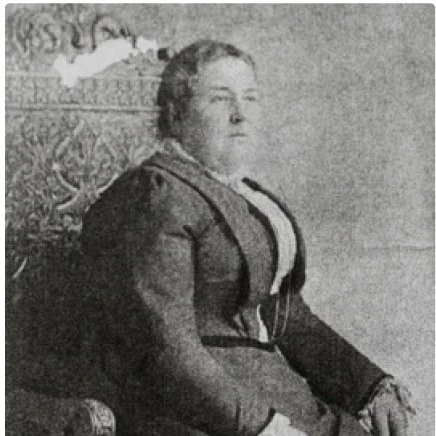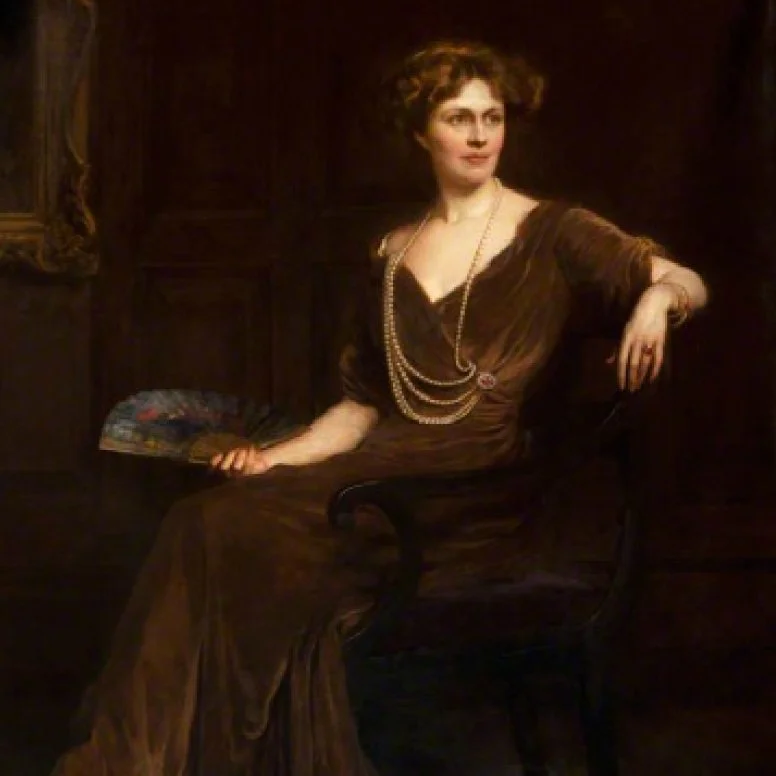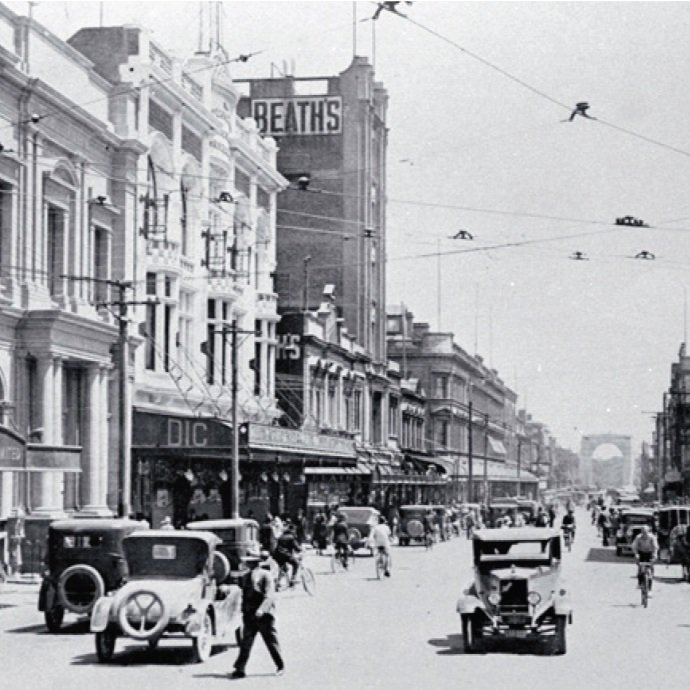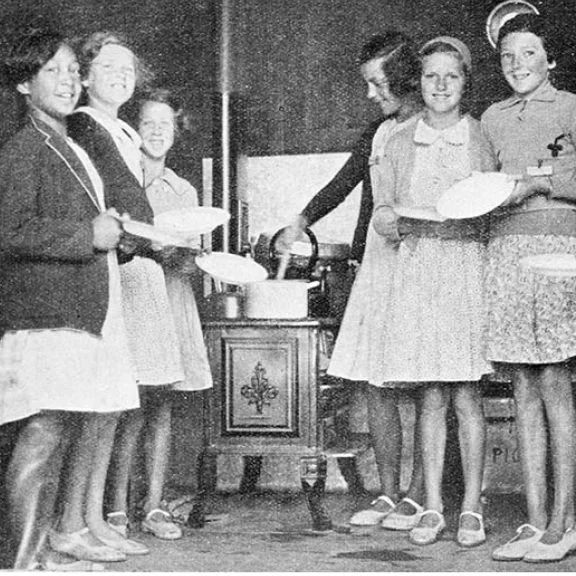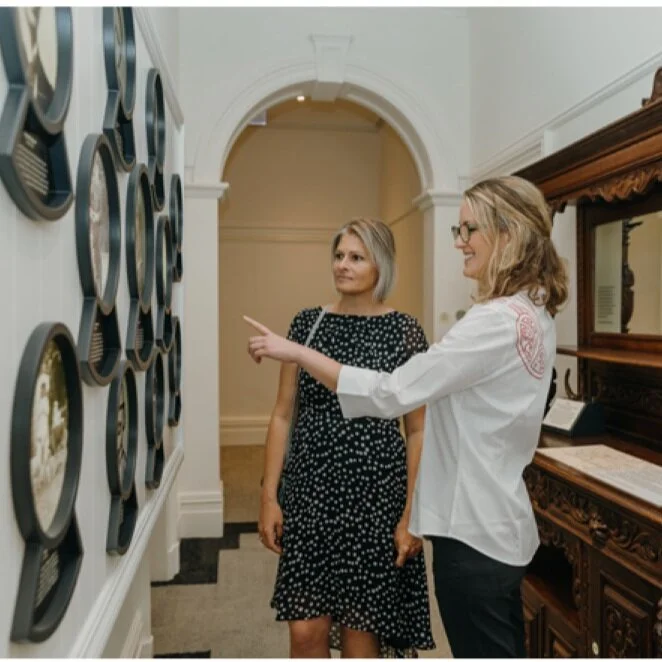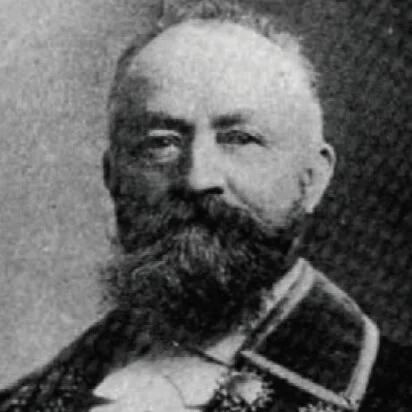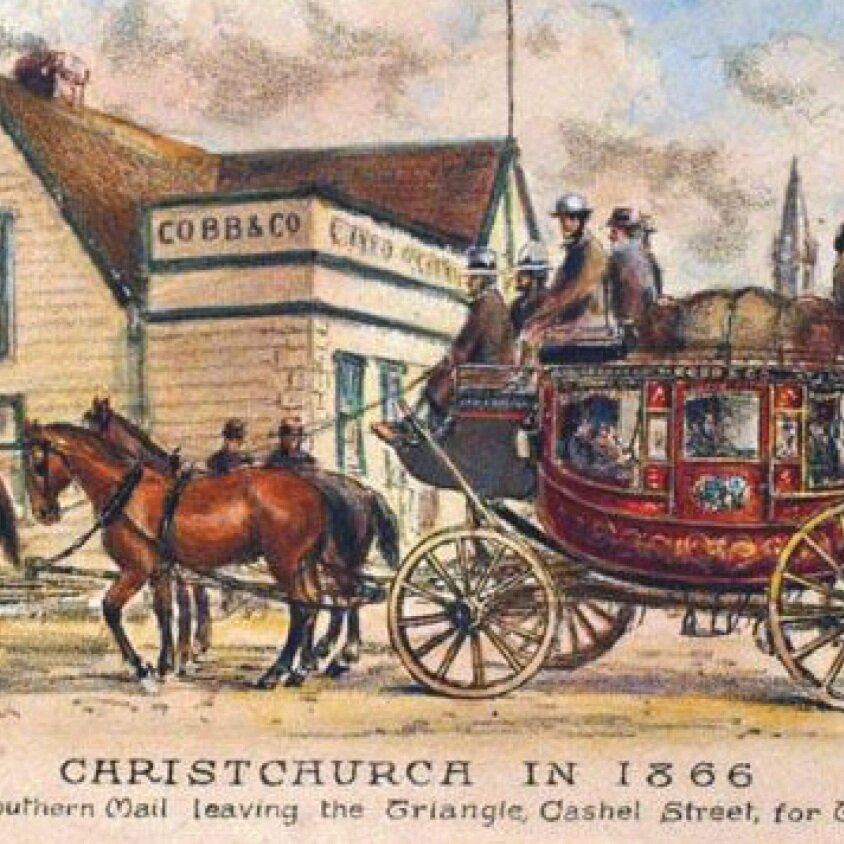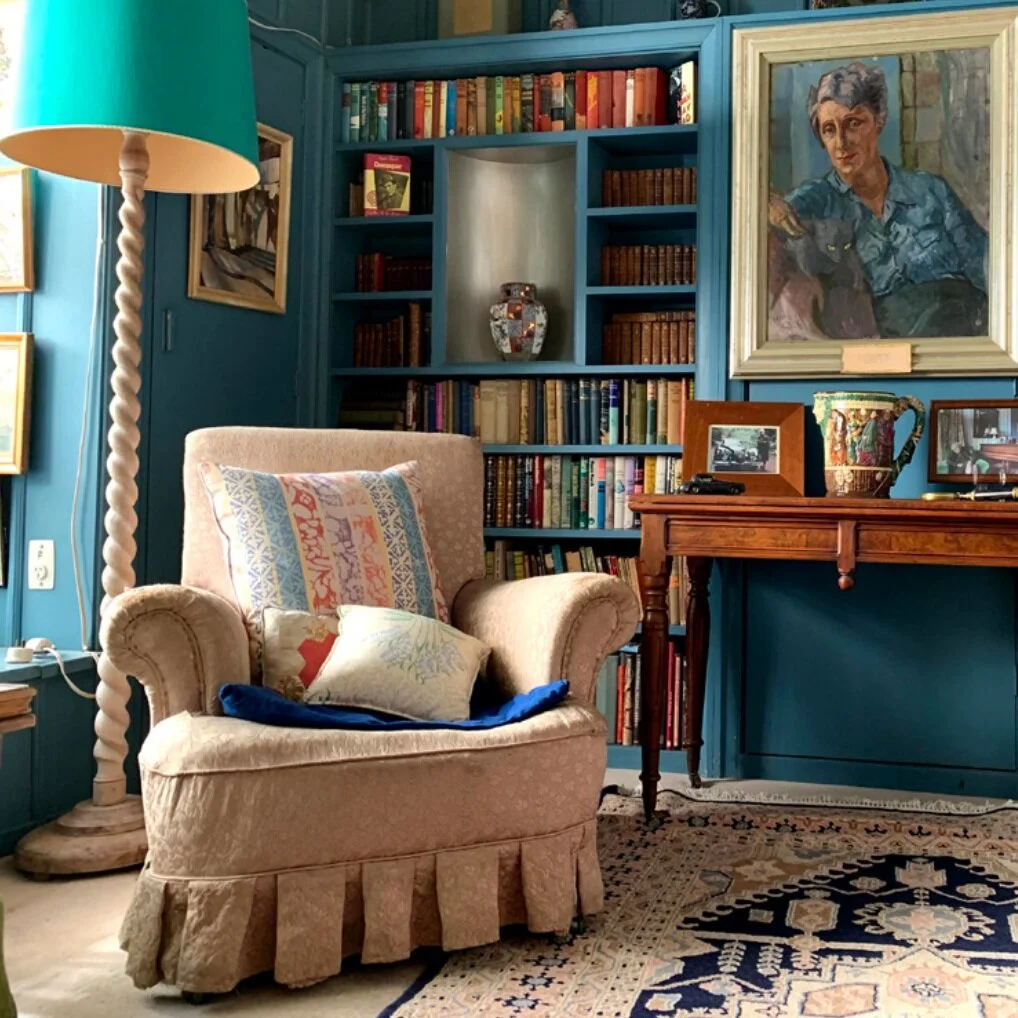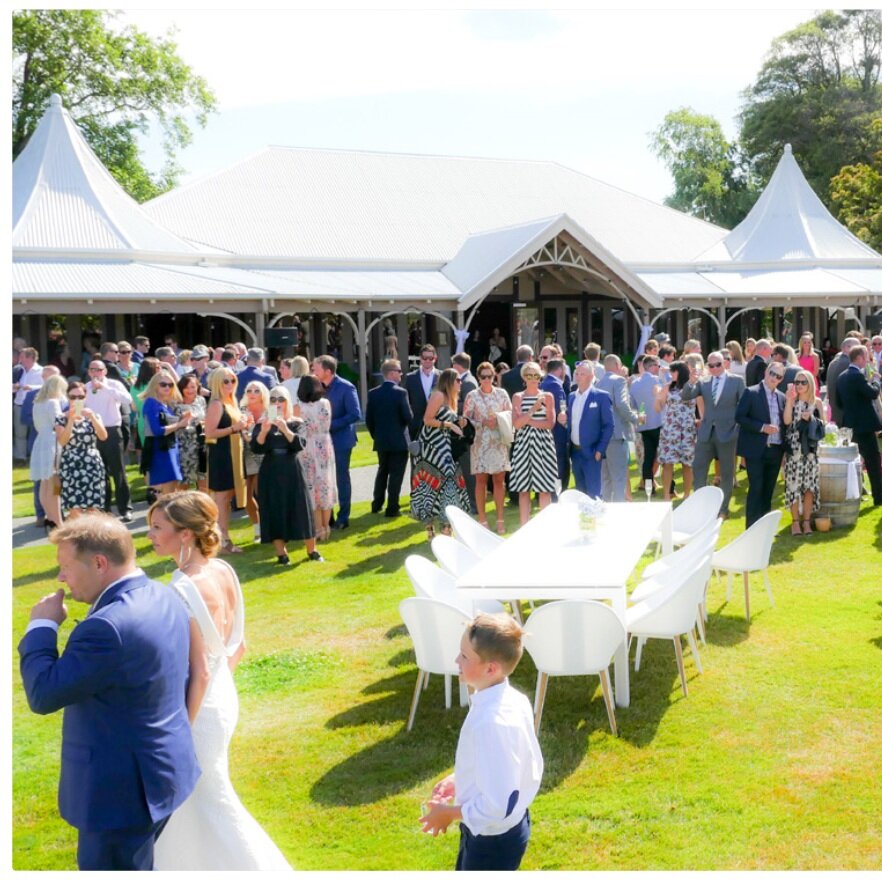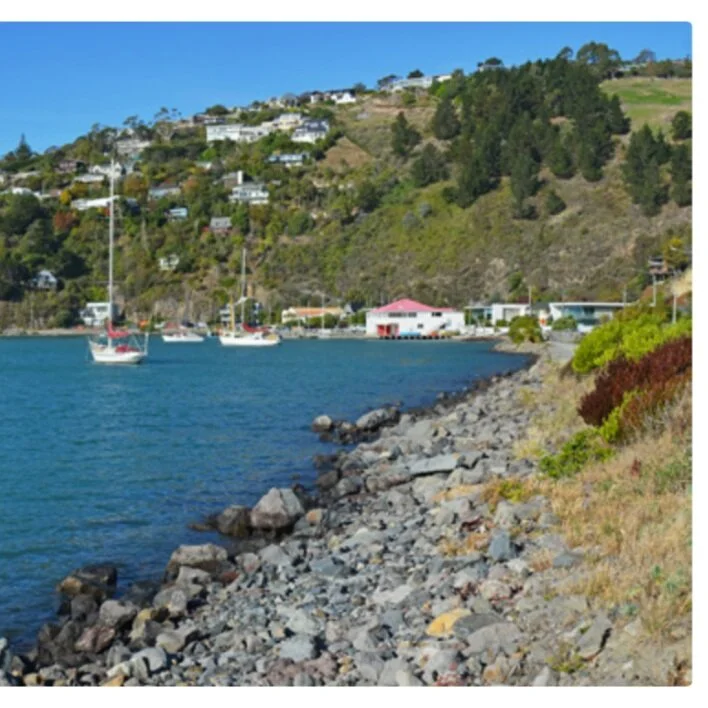From 1919 until 1963, New Zealand audiences were guaranteed “snappy scenes, bright singing, excellent dancing, and sparkling comedy” when attending a Stan Lawson Production. Stan wasn’t just a producer; he could dance, sing, and wisecrack. However, he was arguably New Zealand’s leading female impersonator.
Read MoreFor a time, Agnes Thacker had the distinction of being the first child born in Christchurch to pilgrims from the First Four Ships. Born at ‘The Bricks’, where her father had a wharf, she was the eldest child and only daughter of Essy Joynt and John Thacker.
Read MoreChristchurch beauty Monica Ducarel was tall, glamorous, strong-willed, and, according to social gossip, promiscuous. In a fashionable Brighton wedding in 1889 attended by nobility and titled gentry, and members of her step-mother’s New Zealand family, Monica married Charles Charrington, heir to an English brewery fortune.
Read MoreSandwiched between the iconic White Hart Hotel and the Universal Boot Depot at 223-225 High Street was the business founded by Mr James Freeman, a pastry cook and caterer. Opened in 1891, the building had undergone extensive renovations, making it into one of the city’s finest and most modern refreshment rooms of the time.
Read MoreDressed in a black cutaway coat, dark trousers, and a white silk neckcloth, and sporting a Billy-Cock hat over short hair, Henry James Muir stood before a London magistrate in 1889 dressed in the clothes he had been arrested in. Smoothed face, tall and attractive, Muir looked very much like a respectable young man.
Read MoreWrapped bread became a feature of national life in 1926. Two Christchurch bakeries installed equipment that enabled bread to be automatically wrapped, closed, and wax sealed, so no hands touched the loaf until it made it onto the table
Read MoreThe crusade to induce New Zealanders to make use of sunlight and fresh air and promote better community health began in Christchurch in 1931. The Sunlight League’s aims focused on the prevention of disease and maintenance of good health based on the benefits of the sun.
Read MoreWilliam met and fell in love with Heni Te Marino (Ngāti Irakehu, Ngāi Tahu) of Banks Peninsula. The daughter of Te Heu and Te Kiore Marino, according to whānau whakapapa she was also a close relation of Tangatahara, the defender of Ōnawe pā against Te Rauparaha.
Read MoreSince her maiden voyage in 1864, the Glenmark had made eight voyages to Lyttelton, bringing immigrants and returning with the fruits of colonial labour.
Read MoreYou cannot tell the story of Ōtautahi’s rich history without including New Zealand’s most influential suffragist and leader, Kate Sheppard. Te Whare Waiutuutu Kate Sheppard House is, quite simply, where monumental world history was born.
Read MoreIn August 1884, work was underway on a new Turkish Bath establishment for Christchurch. Near the Kaiapoi Woollen Factory on Cashel St East between Manchester and Madras streets, it was a grand establishment.
Read MoreWhen Professor Ayers, proprietor of the City Baths in Colombo Street, advertised for tenders to build his Turkish Baths in 1877, the public was already well informed about this new bathing fashion’s health benefits.
Read MoreDescribed by an employee as a ‘precocious wastrel’, John Jauncey Buchanan took up dairy farming in Addington – and heavy drinking. After one drunken bout, he sold the his section to cabbage farmer William Wilson for 60 Pounds, who became the owner of one of the most valuable pieces of property to be found in New Zealand. - our current central city.
Read MoreOne of Christchurch’s most successful chemist and druggist shops was owned by George Bonnington. Following in the footsteps of his oldest brother Charles, George left Nelson in 1872 to set up a small shop in Christchurch.
Read MoreFrom a 112-year-old charitable trust facilitating the delivery of Allan McLean’s will to one of the city’s finest retirement villages, Holly Lea’s history is as long as it is illustrious.
Read MoreThis year marks celebrated author, playwright, and creative Ngaio Marsh’s 125th birthday. The Ngaio Marsh House is run as a house museum, first opening in 1996. The vision of the Ngaio Marsh Trust is to preserve the house as a public amenity which will enrich the national cultural heritage of New Zealand.
The Riccarton Tea House is a distinctive building; there is no other like it in Australasia. This is truly a venue with old-world charm and steeped in history – with the most iconic story. Like a phoenix rising from the ashes, the restoration of the Tea House meant the structure was returned to its former glory. Since then, it has operated as a premium location for weddings and auspicious events for Cantabrians.
Read MoreChristchurch is quite possibly the perfect picnic city. We have leafy parks and sandy beaches, places to ramble and places to loll about, warm summer days and long evenings, gently urging us to pack a hamper and go outdoors.
Read MoreWhen Mr Hiorns, hotelier, felt the chill wind of competition from a mobile coffee stall, he succeeded in getting the coffee cart removed.
Read More
